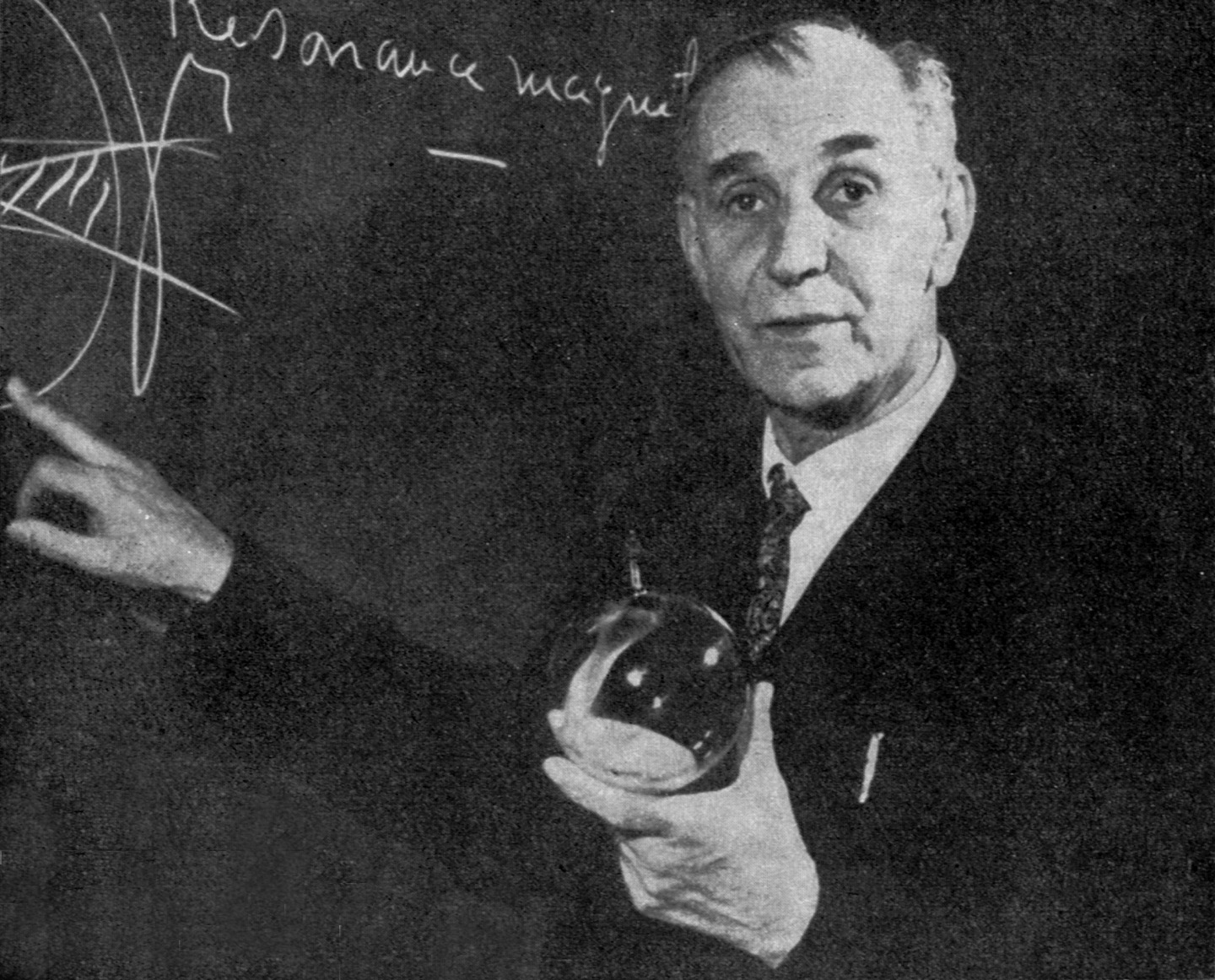|
Tatyana Van Aardenne-Ehrenfest
Tatyana Pavlovna van Aardenne-Ehrenfest, (; October 28, 1905 – November 29, 1984) was a Dutch mathematician. She is known for her contributions to De Bruijn sequences, low-discrepancy sequences, and the BEST theorem. Early life and education Tatyana Ehrenfest was born in Vienna in 1905 and spent her childhood in St Petersburg. She is the daughter of physicists Paul Ehrenfest and Tatyana Afanasyeva. In 1912 the Ehrenfests moved to Leiden where her father succeeded Hendrik Lorentz as professor at the University of Leiden. Until 1917 she was home schooled; after that, she attended the Gymnasium in Leiden and passed the final exams in 1922. She studied mathematics and physics at the University of Leiden. In 1928 she went to Göttingen where she took courses from Harald Bohr and Max Born. On December 8, 1931, she obtained her Ph.D. in Leiden, advised by Willem van der Woude. After that, she was never employed and, in particular, never held any academic position. Contributions D ... [...More Info...] [...Related Items...] OR: [Wikipedia] [Google] [Baidu] |
Mathematical Research Institute Of Oberwolfach
The Oberwolfach Research Institute for Mathematics () is a center for mathematical research in Oberwolfach, Germany. It was founded by mathematician Wilhelm Süss in 1944. It organizes weekly workshops on diverse topics where mathematicians and scientists from all over the world come to do interdisciplinary, collaborative research. The Institute is a member of the Leibniz Association, funded mainly by the Federal Ministry of Education and Research (Germany), German Federal Ministry of Education and Research and by the state of Baden-Württemberg. It also receives substantial funding from the ''Friends of Oberwolfach'' foundation, from the ''Oberwolfach Foundation'' and from numerous donors. History The Oberwolfach Research Institute for Mathematics (MFO) was founded as the ''Reich Institute of Mathematics'' (German: ''Reichsinstitut für Mathematik'') on 1 September 1944. It was one of several research institutes founded by the Nazism, Nazis in order to further the German war ... [...More Info...] [...Related Items...] OR: [Wikipedia] [Google] [Baidu] |
Leiden University
Leiden University (abbreviated as ''LEI''; ) is a Public university, public research university in Leiden, Netherlands. Established in 1575 by William the Silent, William, Prince of Orange as a Protestantism, Protestant institution, it holds the distinction of being the oldest university in the Netherlands of today. During the Dutch Golden Age scholars from around Europe were attracted to the Dutch Republic for its climate of intellectual tolerance. Individuals such as René Descartes, Rembrandt, Christiaan Huygens, Hugo Grotius, Benedictus Spinoza, and later Baron d'Holbach were active in Leiden and environs. The university has seven academic faculties and over fifty subject departments, housing more than forty national and international research institutes. Its historical primary campus consists of several buildings spread over Leiden, while a second campus located in The Hague houses a liberal arts college (Leiden University College The Hague) and several of its faculties. It i ... [...More Info...] [...Related Items...] OR: [Wikipedia] [Google] [Baidu] |
1984 Deaths
__NOTOC__ The following is a list of notable deaths in 1984. Entries for each day are listed alphabetically by surname. A typical entry lists information in the following sequence: * Name, age, country of citizenship at birth, subsequent country of citizenship (if applicable), reason for notability, cause of death (if known), and reference. Deaths in 1984 January * January 1 ** Alexis Korner, British blues musician and broadcaster (b. 1928) ** Joaquín Rodríguez Ortega, Spanish bullfighter (b. 1903) * January 5 – Giuseppe Fava, Italian writer (b. 1925) * January 6 – Ernest Laszlo, Hungarian-American cinematographer (b. 1898) * January 7 – Alfred Kastler, French physicist, Nobel Prize laureate (b. 1902) * January 9 – Sir Deighton Lisle Ward, 4th Governor-General of Barbados (b. 1909) * January 11 – Jack La Rue, American actor (b. 1902) * January 14 ** Saad Haddad, Lebanese military officer and militia leader (b. 1936) ** Ray Kroc, American entrepreneur (b. 1902) * J ... [...More Info...] [...Related Items...] OR: [Wikipedia] [Google] [Baidu] |
1905 Births
As the second year of the massive Russo-Japanese War begins, more than 100,000 die in the largest world battles of that era, and the war chaos leads to the 1905 Russian Revolution against Nicholas II of Russia (Dmitri Shostakovich, Shostakovich's Symphony No. 11 (Shostakovich), 11th Symphony is subtitled ''The Year 1905'' to commemorate this) and the start of Revolution in the Kingdom of Poland (1905–07), Revolution in the Kingdom of Poland. Canada and the U.S. expand west, with the Alberta and Saskatchewan provinces and the founding of Las Vegas. 1905 is also the year in which Albert Einstein, at this time resident in Bern, publishes his four Annus Mirabilis papers, ''Annus Mirabilis'' papers in ''Annalen der Physik'' (Leipzig) (March 18, May 11, June 30 and September 27), laying the foundations for more than a century's study of theoretical physics. Events January * January 1 – In a major defeat in the Russo-Japanese War, Russian General Anatoly Stessel su ... [...More Info...] [...Related Items...] OR: [Wikipedia] [Google] [Baidu] |
Eric W
The given name Eric, Erich, Erikk, Erik, Erick, Eirik, or Eiríkur is derived from the Old Norse name ''Eiríkr'' (or ''Eríkr'' in Old East Norse due to monophthongization). The first element, ''ei-'' may be derived from the older Proto-Norse ''* aina(z)'', meaning "one, alone, unique", ''as in the form'' ''Æ∆inrikr'' explicitly, but it could also be from ''* aiwa(z)'' "everlasting, eternity", as in the Gothic form '' Euric''. The second element ''- ríkr'' stems either from Proto-Germanic ''* ríks'' "king, ruler" (cf. Gothic '' reiks'') or the therefrom derived ''* ríkijaz'' "kingly, powerful, rich, prince"; from the common Proto-Indo-European root * h₃rḗǵs. The name is thus usually taken to mean "sole ruler, autocrat" or "eternal ruler, ever powerful". ''Eric'' used in the sense of a proper noun meaning "one ruler" may be the origin of '' Eriksgata'', and if so it would have meant "one ruler's journey". The tour was the medieval Swedish king's journey, when new ... [...More Info...] [...Related Items...] OR: [Wikipedia] [Google] [Baidu] |
Spanning Tree
In the mathematical field of graph theory, a spanning tree ''T'' of an undirected graph ''G'' is a subgraph that is a tree which includes all of the vertices of ''G''. In general, a graph may have several spanning trees, but a graph that is not connected will not contain a spanning tree (see about spanning forests below). If all of the edges of ''G'' are also edges of a spanning tree ''T'' of ''G'', then ''G'' is a tree and is identical to ''T'' (that is, a tree has a unique spanning tree and it is itself). Applications Several pathfinding algorithms, including Dijkstra's algorithm and the A* search algorithm, internally build a spanning tree as an intermediate step in solving the problem. In order to minimize the cost of power networks, wiring connections, piping, automatic speech recognition, etc., people often use algorithms that gradually build a spanning tree (or many such trees) as intermediate steps in the process of finding the minimum spanning tree. The Intern ... [...More Info...] [...Related Items...] OR: [Wikipedia] [Google] [Baidu] |
Euler Tour
In graph theory, an Eulerian trail (or Eulerian path) is a trail in a finite graph that visits every edge exactly once (allowing for revisiting vertices). Similarly, an Eulerian circuit or Eulerian cycle is an Eulerian trail that starts and ends on the same vertex. They were first discussed by Leonhard Euler while solving the famous Seven Bridges of Königsberg problem in 1736. The problem can be stated mathematically like this: :Given the graph in the image, is it possible to construct a path (or a cycle; i.e., a path starting and ending on the same vertex) that visits each edge exactly once? Euler proved that a necessary condition for the existence of Eulerian circuits is that all vertices in the graph have an even degree, and stated without proof that connected graphs with all vertices of even degree have an Eulerian circuit. The first complete proof of this latter claim was published posthumously in 1873 by Carl Hierholzer. This is known as Euler's Theorem: :A con ... [...More Info...] [...Related Items...] OR: [Wikipedia] [Google] [Baidu] |
Nicolaas Govert De Bruijn
Nicolaas Govert "Dick" de Bruijn (; 9 July 1918 – 17 February 2012) was a Dutch mathematician, noted for his many contributions in the fields of analysis, number theory, combinatorics and logic.Nicolaas Govert de Bruijn's obituary 2012 Biography De Bruijn was born in where he attended elementary school between 1924 and 1930 and secondary school until 1934. He started studies in mathematics at in 1936 but his studies were interrupted by the outbreak of |
Cyclic Sequence
In mathematics, a cyclic order is a way to arrange a set of objects in a circle. Unlike most structures in order theory, a cyclic order is not modeled as a binary relation, such as "". One does not say that east is "more clockwise" than west. Instead, a cyclic order is defined as a ternary relation , meaning "after , one reaches before ". For example, une, October, February but not une, February, October cf. picture. A ternary relation is called a cyclic order if it is cyclic, asymmetric, transitive, and connected. Dropping the "connected" requirement results in a partial cyclic order. A set with a cyclic order is called a cyclically ordered set or simply a cycle. Some familiar cycles are discrete, having only a finite number of elements: there are seven days of the week, four cardinal directions, twelve notes in the chromatic scale, and three plays in rock-paper-scissors. In a finite cycle, each element has a "next element" and a "previous element". There are also cyclic ord ... [...More Info...] [...Related Items...] OR: [Wikipedia] [Google] [Baidu] |
Max Born
Max Born (; 11 December 1882 – 5 January 1970) was a German-British theoretical physicist who was instrumental in the development of quantum mechanics. He also made contributions to solid-state physics and optics, and supervised the work of a number of notable physicists in the 1920s and 1930s. Born shared the 1954 Nobel Prize in Physics with Walther Bothe "for his fundamental research in quantum mechanics, especially in the statistical interpretation of the wave function". Born entered the University of Göttingen in 1904, where he met the three renowned mathematicians Felix Klein, David Hilbert, and Hermann Minkowski. He wrote his PhD thesis on the subject of the stability of elastic wires and tapes, winning the university's Philosophy Faculty Prize. In 1905, he began researching special relativity with Minkowski, and subsequently wrote his habilitation thesis on the Thomson model of the atom. A chance meeting with Fritz Haber in Berlin in 1918 led to discussion of how an io ... [...More Info...] [...Related Items...] OR: [Wikipedia] [Google] [Baidu] |
Harald Bohr
Harald August Bohr (22 April 1887 – 22 January 1951) was a Danish mathematician and footballer. After receiving his doctorate in 1910, Bohr became an eminent mathematician, founding the field of almost periodic functions. His brother was the Nobel Prize-winning physicist Niels Bohr. He was on the Denmark national team for the 1908 Summer Olympics, where he won a silver medal. Biography Bohr was born in 1887 to Christian Bohr, a professor of physiology, from a Lutheran background, and Ellen Adler Bohr, a woman from a wealthy Jewish family of local renown. Harald had a close relationship with his elder brother, which ''The Times'' likened to that between Captain Cuttle and Captain Bunsby in Charles Dickens' '' Dombey and Son''. Mathematical career Like his father and brother before him, in 1904 Bohr enrolled at the University of Copenhagen, where he studied mathematics, obtaining his master's degree in 1909 and his doctorate a year later. Among his tutors were Hieronymus Geo ... [...More Info...] [...Related Items...] OR: [Wikipedia] [Google] [Baidu] |




